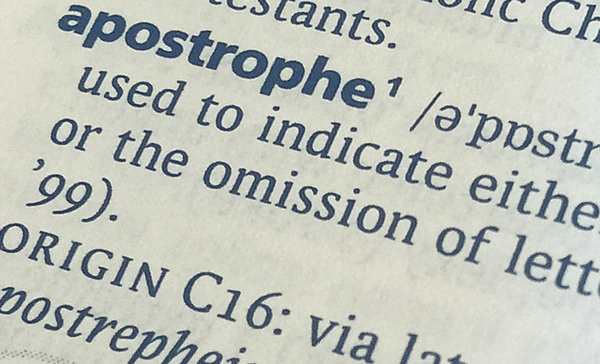
08 May An Introduction to Apostrophes
Every second Sunday in May is a day dedicated to all mothers. Should it be written:
Mother’s Day?
Mothers’ Day?
…or should the apostrophe be left out altogether?
Apostrophes are one of the trickiest parts of English grammar and are frequently misused and confused.
Here’s an introduction to apostrophes, with three easy tips to help you use them competently on any occasion!
1. When a letter is omitted
It’s raining outside (It is)
You’re very busy (You are)
There’s a problem (There is)
2. Possession
Singular version: Bob’s car
Here the apostrophe is placed after “Bob” and before the “s” indicating that the car belongs to Bob.
Plural version: Ladies’ haircuts
Here the apostrophe is placed after the “s” in “ladies” indicating that the haircuts are for multiple ladies.
3. However there are always exceptions to rules. Namely its. When its is possessive, such as, the cat is eating its dinner, no apostrophe is needed. However, if you were to say, it’s very hot today, we would need an apostrophe there as a letter has been omitted. As stated above, it’s is a shortened form of “it is”.
So in answer to the question above, where should be the apostrophe be placed in Mothers Day? Or can the apostrophe be left out? Let me know what you think in the comments box below.

